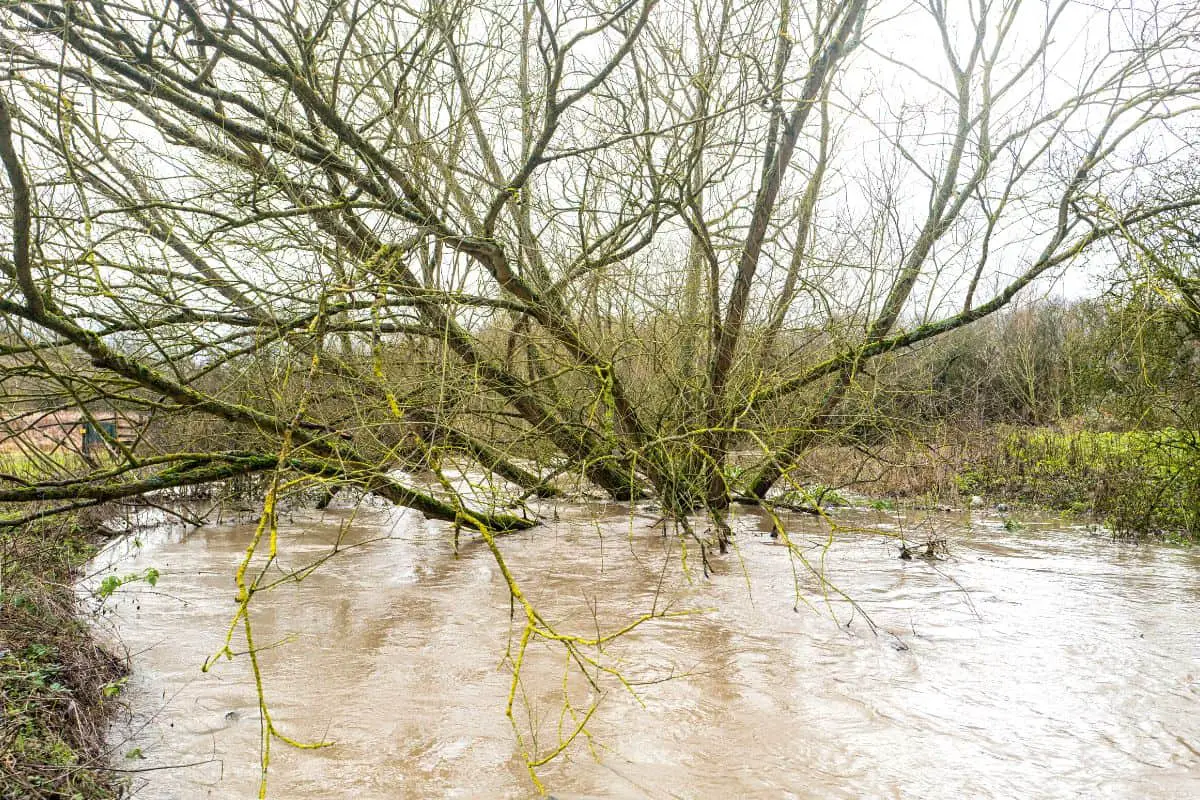Bass fishing in rising water can be one of the most difficult conditions that anglers face. Knowing where to look and how to target these bass can salvage a difficult day.
When water is on the rise, bass will follow it up and often spread out. When flood waters create less visible conditions you can find fish shallow and along hard structure. Vertical structure is also a key location when fishing in flooded waters.
We will break down all of the above situations as well as talk about what happens when those flood waters start to recede.
The Type of Rising Water Makes a Difference
Rising water, or flood waters, are very different from one place to another. It can even vary greatly on man-made reservoirs. Some of them are deliberately used for flood control and the Corp. of Engineers will let the water climb exceedingly high, while those reservoirs with significant development around them are less likely to have a huge fluctuation.
River size and drainage area can have a significant impact on what an angler will see as well. These various conditions can best be split into two categories – fast-rising water and slow-rising water.
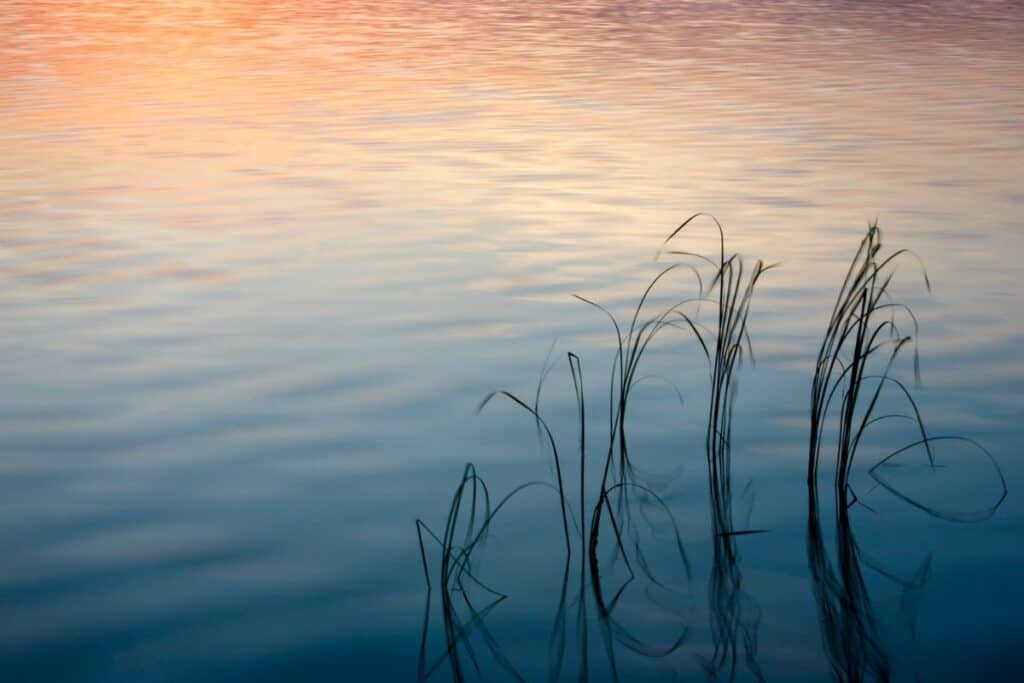
The result of what it will do to the bass is essentially the same, but the speed at which it happens is much more sudden with fast-rising water.
Anglers often pick up on the fast-rising conditions much easier and will start to use high-water tactics right away. Those situations where it is bright and sunny, but the water is really up a foot or two, are more challenging to notice and adjust to as quickly.
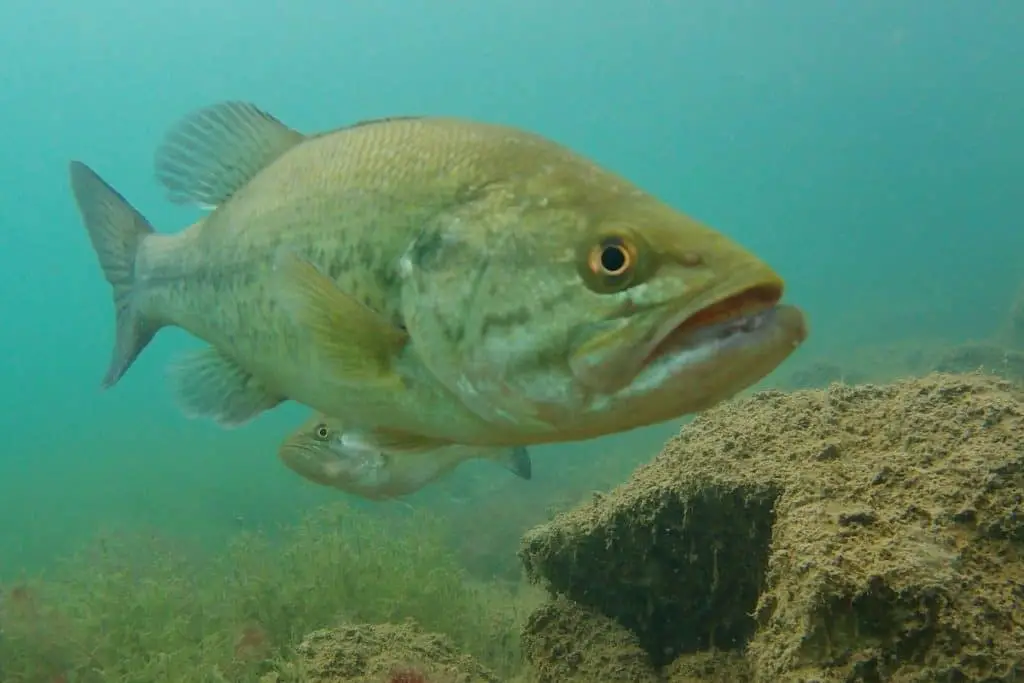
What The Bass Will Do on Rising Water
It is important to mention that heavy current changes everything. This is most noticeable in river systems. When these very dangerous conditions occur, the bass will hunker down behind the structure or pull tighter to the river bed. The current at the top of the water column in a river is much faster than the current along the river bed.
Anglers should avoid these conditions – even from the shore.
Under safe rising water conditions, the bass will creep up with it.

The newly flooded terrain traps terrestrial creatures and draws in all sorts of aquatic life. Panfish and baitfish will move in and gorge themselves on insects and other food sources that are now easily available to them.
The bass will follow.
Water Clarity and The Impact on Bass
It always amazes me what a difference there can be in water clarity during flood-type conditions.
We often associate high water with mud, and that is the case a lot of the time. On slow-rising water, anglers can also experience relatively clear or slightly stained water.
If the water is dirty, or much dirtier than what the bass are used to, it will push them shallow and to hard structure.
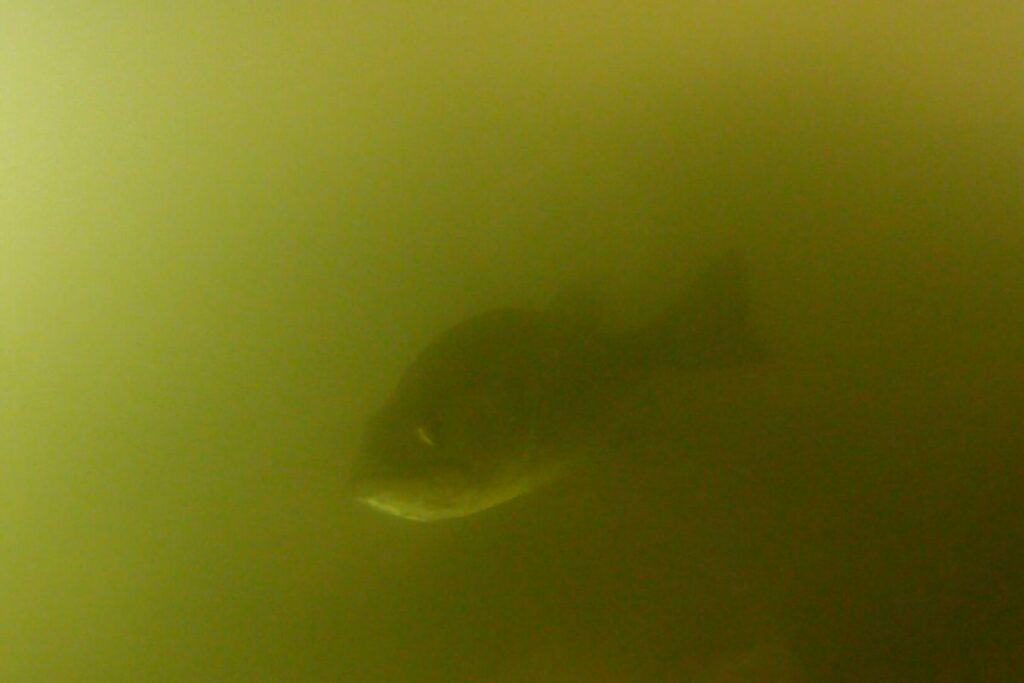
Bass are very sight-oriented feeders in most environments. When faced with diminished visibility, they will hunker along hard structure to help guide them. It is similar to what we do when the power goes out. Our natural instinct in a dark room is to reach out with our hands to find something hard like a wall. We use this to orient ourselves in the dark environment. Bass do the same thing.
In many ecosystems, this means moving shallow and along the shoreline.
There are times when bass will pull deeper into something like brushpiles, but in all the dirty water situations I have fished around the country working shallow hard structure pays off.
(Here is an article about bass fishing while it’s raining.)
If the water is rising, but still has decent visibility, the draw to the shallows and hard structure is not as defined. This is when I focus on where the prey species are hanging out in the newly flooded areas.
If you find a pile of panfish working around and picking off insects in some flooded brush, that is a good place to target some bass.
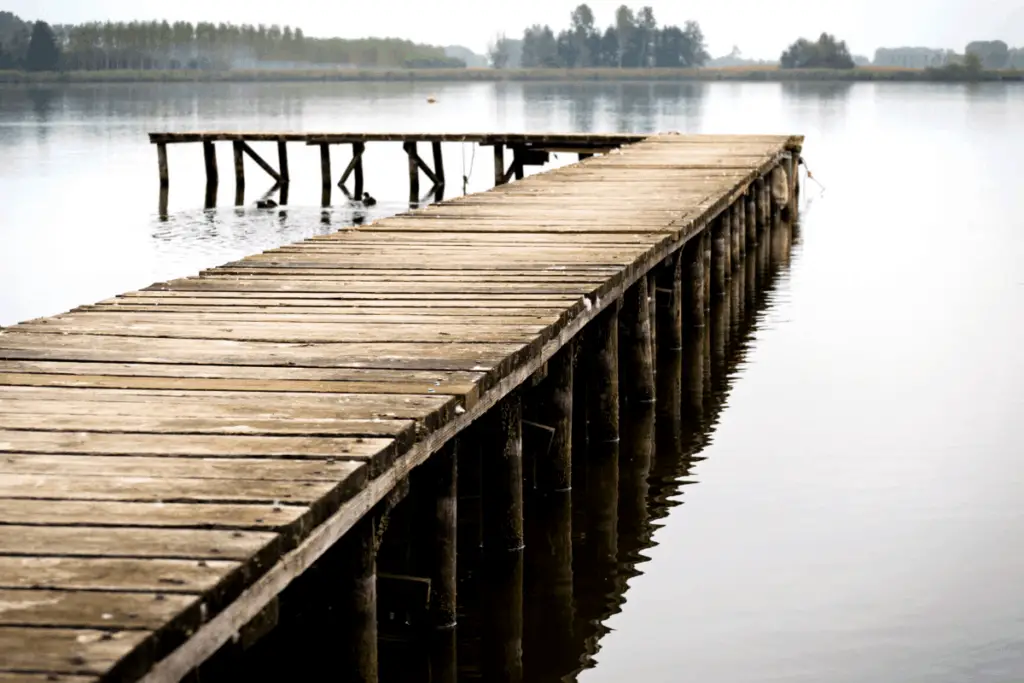
Vertical Structure and Rising Water
Fishing vertical structure is my favorite rising water tactic because it eliminates so many places the bass could be.
One of the most frustrating situations for bass anglers is when there are hundreds or even thousands of new acres for bass to hide in. I fished a tournament on Beaver Lake in Arkansas many years ago that saw massive rainfall both before and during the event. The lake level rose to the point where the reservoir fished nothing like it normally did. A creek arm would increase in size by about 50%.
I performed horribly in that event.
I learned about this vertical structure approach to rising water the next year on Truman Lake in Missouri. We were once again faced with flood conditions. The winner of the event, and other top finishers, were only fishing bluffs. Afterward, they explained why.
“The bass can only go up or down.”
That made a lot of sense to me and it clicked.
If I could find a place in rising water where the bass only move up, but stay along the hard bluff wall, then I just eliminated the possibility of them spreading out horizontally. The amount of water to search was reduced.
Not all bodies of water have bluff walls like those found on highland reservoirs, but nearly every body of water has some sort of vertical structure. This could be something as simple as the outside bend of a creek channel on a small river to sea walls and dock pilings found about anywhere.
The vertical structure doesn’t have to be huge. A 4 ft sea wall has produced many times for me on both lakes and rivers.
Always be thinking about where the bass can only go up or down and you are quickly eliminating a lot of water.
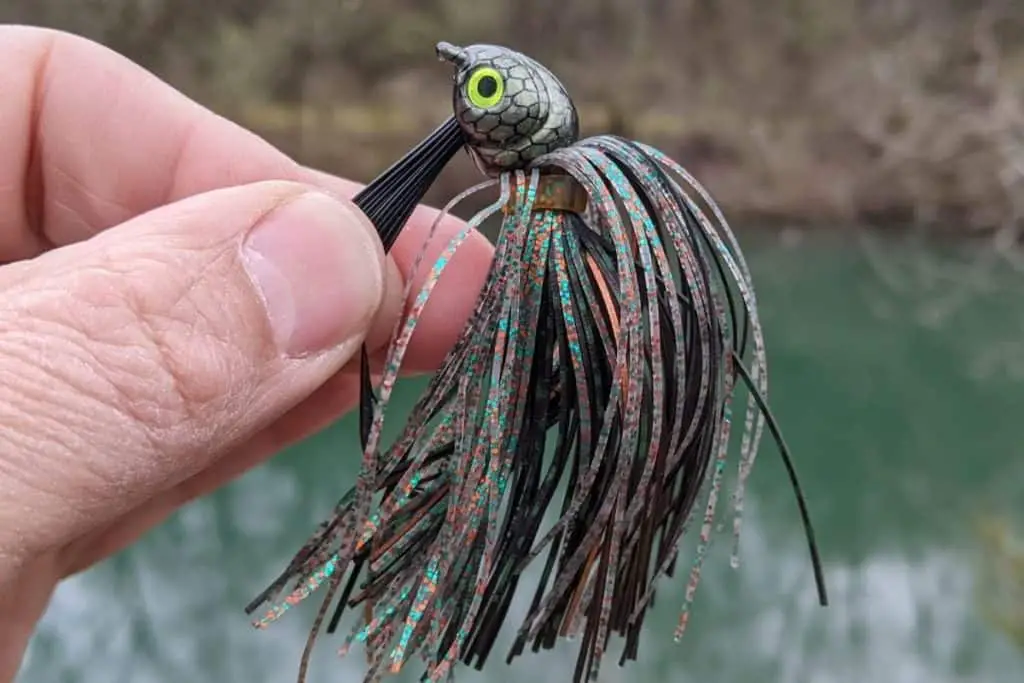
Lure To Fish on Vertical Structure During Rising Water
I like to keep this simple as well. Almost 100% of the time there will be a jig tied on. A flipping jig can be pitched right along the vertical structure, and if needed, an angler can peel slack line to let the jig fall straight down along that structure.
If there are bass there, they will be suspended somewhere along it. When the water is dirty they will be very tight to it. The jig will need to literally hit it and bounce down along the rock. A cast out a foot from the structure may miss the fish entirely.
Peeling slack line on structure that has some depth to it is key. We do not want that lure to pendulum out and away from the target area and swing back to us.
Rate of Fall When Fishing Vertical Structure
Change the weight of the jig or the type of soft plastic trailer to adjust the fall rate.
When the water is dirty I want the fall to be as slow as possible. In clearer water, a faster fall rate triggers more reaction strikes for me. Keep experimenting until you discover what the bass want on that day.
Most often I will start with a 1/4oz jig and a twin-tail grub trailer and adjust from there. Solid colors with strong profiles are my first choice in low visibility and then I will switch to more natural color patterns in cleaner water.
What Happens When the Water Starts to Recede
As soon as you notice that the water level is dropping you can bet the bass sensed it long ago.
So what happens?
Think about your house for a moment. What would you do if the roof started to drop? We would be forced to go to lower levels.
The bass react the same way, especially when the water levels were extremely high and vast areas of fresh land were flooded.
When the cilia on their lateral lines sense that pull downward the bass start to migrate back to the original shoreline. Just picture what the lake or river looked like before the high water and that is where you should start fishing.
Once again, vertical structure on falling water is a great place. The bass will drop with the water level and still stay close to the hard structure.
Good luck out there and be sure to encourage someone today. You never know how you may change their life forever.
Isaiah 6:8

